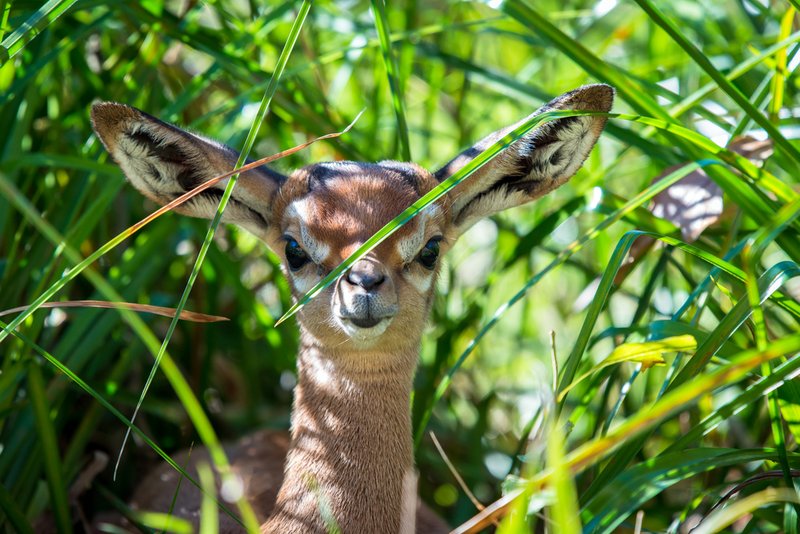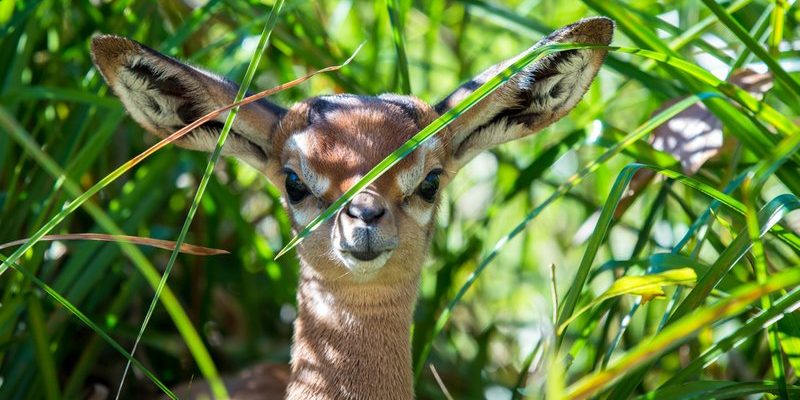
The gerenuk, often referred to as the “giraffe gazelle,” is a slender, long-necked antelope found primarily in East Africa. Its striking appearance and distinctive feeding habits make it a remarkable species worth getting to know. But beyond its charm, the gerenuk has a crucial role in its ecosystem that balances various elements of life in its habitat. Let’s dive deeper into this intriguing creature and see how it influences its environment.
What Is a Gerenuk?
The gerenuk (Litocranius walleri) is an antelope known for its unique adaptations. Unlike other antelopes, it has an elongated neck and a more slender body. Typically, males are larger than females and can weigh up to 120 pounds. Their long legs and neck enable them to reach leaves and shoots that are high above the ground—food that other grazers can’t access.
In terms of color, gerenuks have a sandy or reddish-brown coat adorned with white markings on their face and belly. This coloration helps them blend into their dry, bushy surroundings, providing a natural form of camouflage. When you spot one, it might remind you of a high-fashion model on a runway, showcasing both elegance and poise.
But it’s not just their looks that make them special. Gerenuks are browsers, which means they primarily eat leaves and shrubs instead of grass. This feeding behavior makes them essential players in their ecosystem. Their ability to reach high foliage allows them to reduce competition for food with other herbivores that graze mainly on the ground.
The Gerenuk’s Feeding Habits
Gerenuks have developed some fascinating feeding habits that allow them to thrive in their environment. By standing on their hind legs, they can access food sources that aren’t available to shorter herbivores. This unique ability helps them avoid competition and ensures they can find sustenance even during dry seasons.
You might be wondering how this behavior impacts the ecosystem. Since gerenuks primarily feed on the leaves of shrubs and trees, they help control plant growth. By eating these leaves, they prevent certain plants from becoming overgrown, which can promote a healthier, more balanced ecosystem.
Additionally, their selective feeding contributes to the plant diversity in their habitat. When they prune certain plants, it encourages new growth and allows other species to flourish. Think of it as nature’s way of pruning a garden—helping different plants thrive by making room for them.
The Role of Gerenuks in Seed Dispersal
Another interesting aspect of the gerenuk’s role in the ecosystem is its part in **seed dispersal**. When they consume fruits or pods, they often excrete the seeds elsewhere in their droppings. This behavior is vital for many plants, as it helps spread their seeds across greater distances.
Imagine a gardener planting seeds across a garden bed; this is somewhat similar to what gerenuks do in the wild. By moving seeds away from the parent plant, they enable the growth of new plants in different locations, promoting biodiversity. This dispersal mechanism not only benefits the plants but also provides food for other animals in the ecosystem, creating a ripple effect of life.
Moreover, the seeds that pass through a gerenuk’s digestive system may even be more likely to germinate. The process of digestion can help break down the seed coat, making it easier for the seed to sprout.
Predators and the Gerenuk: A Delicate Balance
In the ecosystem, gerenuks are both prey and players. Their slender bodies make them susceptible to predators like cheetahs, lions, and hyenas. However, they have a few tricks up their sleeves to evade these threats.
Gerenuks often use their keen eyesight to spot predators from a distance. Their long legs allow them to make quick escapes when they sense danger. They have a unique way of alerting each other when a predator is nearby through a specific alarm call, which helps keep the group safe.
This delicate balance between predator and prey is crucial for maintaining ecosystem health. Predators like lions and hyenas rely on gerenuks for food, which helps keep their populations in check. Conversely, if gerenuks were to decline significantly, it could lead to an overpopulation of vegetation, disrupting the entire food web.
The Impact of Environmental Changes on Gerenuks
Like many species, gerenuks face challenges due to environmental changes. Habitat destruction from human activities, such as deforestation and agriculture, has a significant impact on their populations. As their habitats shrink, so do their food sources, making survival increasingly difficult.
Additionally, climate change can alter the availability of water and food, putting further stress on gerenuk populations. As temperatures rise and rainfall patterns shift, the delicate balance of their ecosystem becomes disrupted.
To help protect this unique species, conservation efforts are essential. These efforts not only aim to preserve the gerenuk population but also to maintain the health of their entire ecosystem. Working together, we can ensure that this graceful creature continues to play its vital role in the African savanna.
Conservation Efforts and the Future of Gerenuks
Various organizations are working diligently to conserve gerenuks and their natural habitats. These efforts often include creating protected areas, implementing sustainable land-use practices, and raising awareness about the importance of this species in the ecosystem.
Community involvement is also vital. Educating local populations about the value of gerenuks and their role in the environment can foster a sense of stewardship. When people understand that protecting the gerenuk benefits the entire ecosystem, they are more likely to participate in conservation efforts.
It’s worth noting that protecting the gerenuk isn’t just about preserving one species; it’s about maintaining the health of an entire ecosystem. This interconnectedness is what makes conservation so important.
The gerenuk may not be the biggest or most famous animal in the African savanna, but its role in the ecosystem is undeniably significant. From its unique feeding habits to its role in seed dispersal, the gerenuk contributes to a delicate balance that supports the health of its environment. By understanding and protecting this remarkable antelope, we can help ensure that it continues to thrive in its natural habitat.
In a way, conserving the gerenuk is like nurturing the roots of a tree. Healthy roots support a robust tree, just as a healthy population of gerenuks supports a thriving ecosystem. So, the next time you think of the African savanna, remember to appreciate all its inhabitants, especially the graceful and vital gerenuk.

